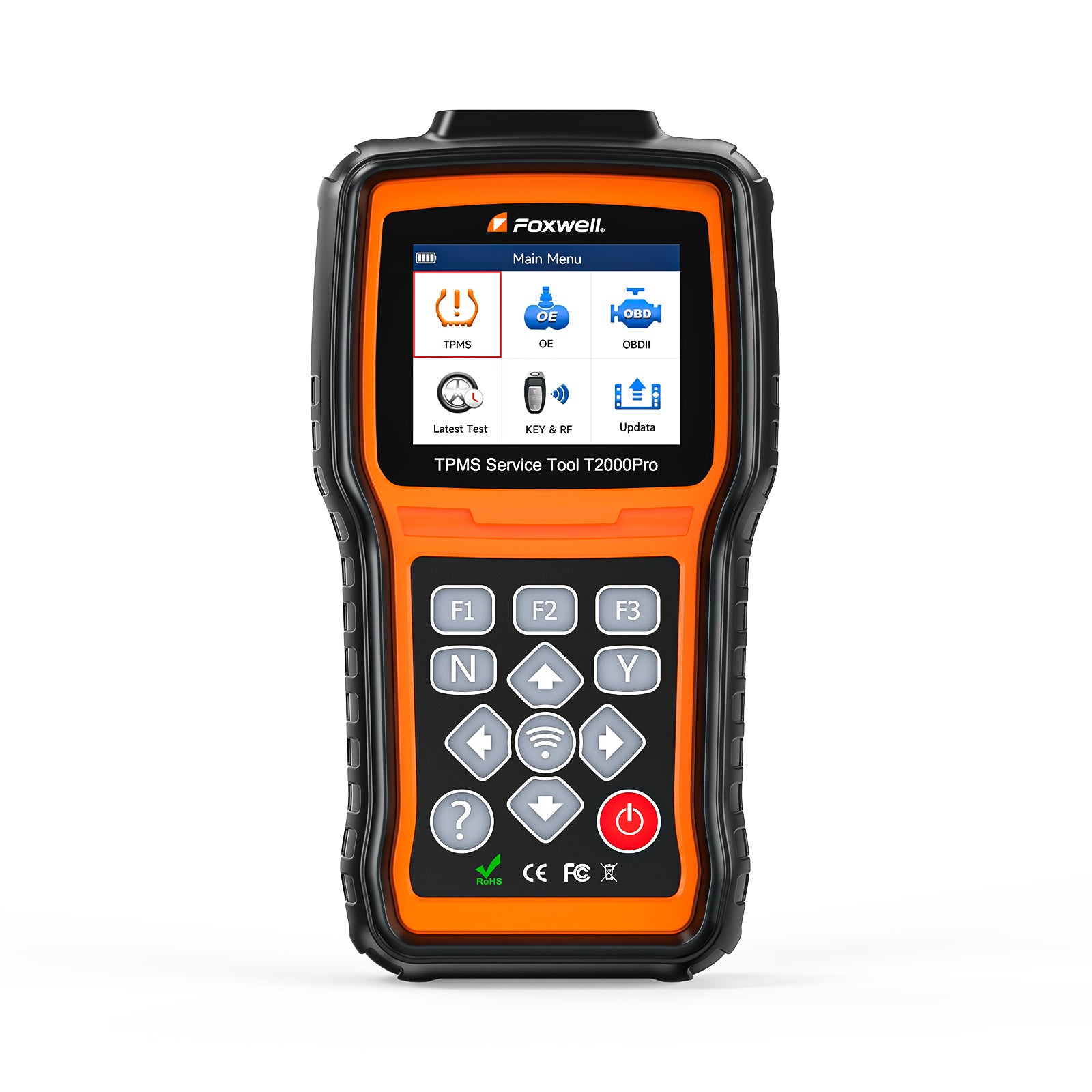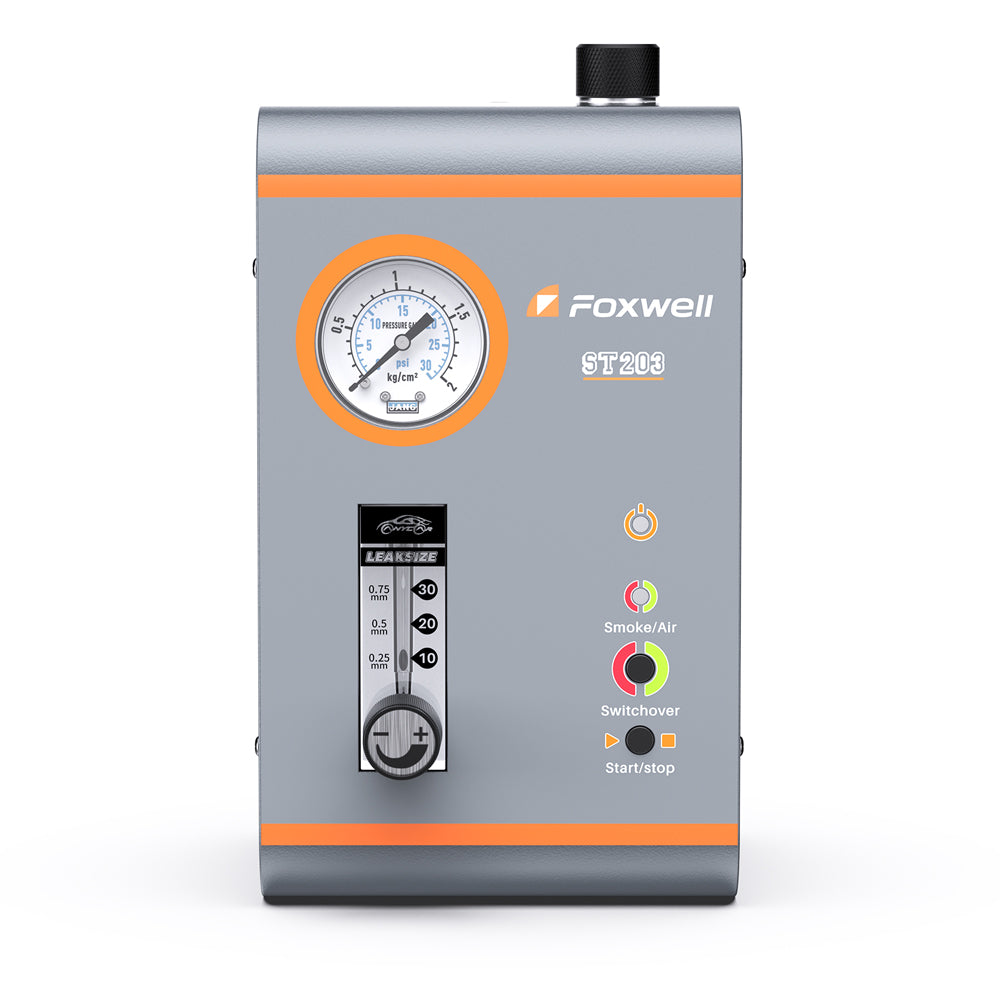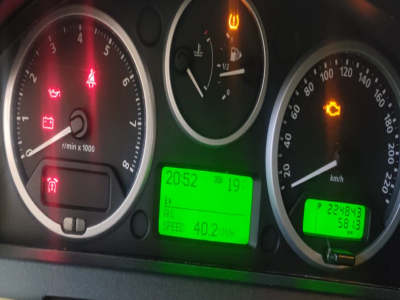If your OBD2 scanner has pulled a P2098 code—“Post Catalyst Fuel Trim System Too Lean Bank 2”—you’re likely dealing with a fuel mixture issue occurring after the catalytic converter. While this may not cause immediate drivability problems, ignoring it could lead to reduced fuel efficiency or even long-term damage to your emissions system.
For both professionals and DIYers, using a reliable diagnostic tool is key to correctly identifying the cause of this code. Before replacing any parts, it’s essential to understand what this code means, what symptoms to look out for, and how to properly fix the issue.
What Does the P2098 Code Mean?
The P2098 is a generic automotive trouble code, referring to the situation where the Post Catalyst Fuel Trim System (air - fuel mixture ratio) for Bank 2 is too lean. In other words, this trouble code indicates that in the vehicle's fuel system, when supplying fuel to the engine, the proportion of the air - fuel mixture is on the lean side and fails to reach the ideal air - fuel ratio. Specifically, it means the fuel supply is insufficient relative to the air, causing an imbalance in the fuel - to - air ratio for “Bank 2”.
When encountering the P2098 trouble code, there's no need to be overly anxious. It's just the Electronic Control Unit (ECU) alerting that there's an abnormal operation in the post - catalyst fuel trim system, with the fuel supply and air proportion being out of whack and showing as “Bank 2” being too lean.
What causes the P2098 code?
The P2098 trouble code can result from a variety of issues, generally falling into the following categories:
|
Classification |
Possible Causes |
|
Air Leak–Related |
|
|
Sensor Malfunction |
|
|
Fuel System Issues |
|
|
Control Module Malfunction |
|
Real-World Example From Reddit: 2010 Dodge TRX4
"A Dodge TRX4 owner once encountered the P2098 code after a long-distance drive, despite the truck running smoothly. They suspected fuel type might be an issue, having switched from 87 to 93 octane, but as another user pointed out: 'Fuel type isn't the problem—it's likely an exhaust leak or a bad downstream O2 sensor. If you've got a scanner and the right socket, it's a doable fix.' — Reddit user u/eerrrrrkk. In this particular case, the driver later reported that the check engine light turned off by itself, suggesting the issue may have been intermittent or self-corrected—possibly due to an exhaust seal reseating or sensor recalibration."
What are the symptoms of a Lean Post Catalyst Fuel Trim on Bank 2 (P2098)?
- Power and driving experience: The engine power may become weaker, and the response during acceleration will be sluggish and “lacking power”. Intermittent shaking may occur during driving, even accompanied by a sense of frustration, which affects the driving smoothness.
- Exhaust and emissions: The peculiar smell of the exhaust gas will be more obvious, and there may be an abnormal smell similar to unburned fuel or other strange odors; the vehicle emissions may also fail to meet the standards, and the fault light (such as the engine fault light) often lights up to indicate an abnormality.
- Fuel consumption performance: Due to the too - lean air - fuel mixture, the engine may inject more fuel for compensation to maintain normal operation, which in turn leads to an abnormal increase in vehicle fuel consumption and a significant reduction in the driving range after refueling.
- Other abnormalities: In the long run, it may also cause the engine to overheat, or cause abnormal wear and tear of components such as spark plugs and three - way catalytic converters, increasing subsequent maintenance costs; some vehicle models may experience unstable idling, for example, the engine speed fluctuates up and down during idling.
Related Reading: Replacing O2 Sensor Bank 1 Sensor 1 in Your Vehicle
How to Diagnose P2098 and Related Fuel Trim Issues
Scan for Codes and Freeze Frame Data
To properly diagnose code P2098, you'll need a reliable OBD2 scanner capable of reading post-catalyst fuel trim data and freeze frame information.
Pro Tip:
A professional-grade diagnostic tool like the FOXWELL GT60 allows you to:
- supports live graphing of downstream O₂ sensor data, fuel trims,
- 20 service functions(from injector coding to TPMS and A/F adjustment. )
- For faults caused by abnormal ECU programs, the GT60 supports online refreshing of original factory programs.
This tool can save time and prevent misdiagnosis, especially when dealing with post-catalyst fuel trim issues.
Inspect Oxygen Sensors and Exhaust System
Since P2098 relates to the downstream O2 sensor (Bank 2, Sensor 2):
- Check the sensor for contamination or wear
-Inspect the wiring harness and connectors for corrosion or damage
-Look/listen for exhaust leaks near the sensor—a common cause reported by many owners
Check for Air Leaks After the MAF Sensor
Vacuum leaks or cracked hoses between the MAF sensor and throttle body can throw off the air-fuel mix. Also check the:
-PCV system
-Intake manifold gaskets
-EGR valve seating
These can all cause lean conditions not immediately visible through fuel trims alone. A quick way to identify these invisible leaks is to use an automotive smoke machine. It helps you visually spot vacuum or exhaust leaks by injecting smoke into the system, revealing leaks that are otherwise hard to find.
Check MAF Sensor and Engine Speed Inputs
A dirty or faulty MAF sensor can cause incorrect air flow readings, affecting the ECU's fuel trim calculations. Try:
- Cleaning the MAF sensor with proper spray
-Testing for proper voltage and signal output using scan data
Reset the Code and Test Drive
After any repairs or tests, clear the code and monitor the vehicle during a short test drive.
Watch:
- O2 sensor switching
- STFT/LTFT stabilization
- Whether P2098 returns under similar driving conditions
Common Mistakes in Diagnosing Post Catalyst Fuel Trim Issues
Diagnosing post catalyst fuel trim issues—especially codes like P2098—can be tricky, because the root cause is often not where the code points. Many DIYers and even seasoned technicians fall into these common traps:

1. Blindly Replacing the O2 Sensor
When codes like P2098/P2097 appear, many assume the downstream oxygen sensor is faulty and replace it immediately. However, the sensor is often just reporting a real issue, not causing it.
Correct approach: Use a diagnostic scanner to monitor real-time voltage from the sensor. A flat line may indicate failure; erratic or high fluctuations might suggest an air-fuel imbalance or exhaust leak.
2. Ignoring Exhaust Leaks Near the Downstream Sensor
Small leaks after the catalytic converter can let in extra oxygen, causing the sensor to falsely detect a lean condition—especially on Bank 2, where visual inspection is more difficult.
Correct approach: Raise the vehicle and listen for “puffing” sounds during a cold start (a method recommended by Reddit users). Smoke tests or applying soapy water around joints can also help reveal minor leaks.
3. Focusing Only on One Bank’s Fuel Trim
Looking only at Bank 2’s fuel trim data may lead to incomplete conclusions.
Correct approach: If both Bank 1 and Bank 2 show lean conditions, the issue likely lies upstream (e.g., dirty MAF sensor, low fuel pressure). If only Bank 2 is affected, inspect that side’s injectors, manifold, or exhaust for issues.
4. Overlooking MAF or PCV System Faults
A dirty or aging Mass Air Flow (MAF) sensor can send incorrect intake readings, causing fuel miscalculations. Similarly, leaks or blockages in the PCV or EGR system may introduce unmetered air, misleading the O2 sensor.
Correct approach: Inspect MAF readings before cleaning; compare values against factory specs. Remove and test the PCV valve for sticking or leakage.
5. Clearing the Code Without Fixing the Root Cause
Clearing the code without resolving the issue often results in the check engine light returning. While some minor issues may self-correct, most will re-trigger under the same conditions.
Correct approach: Identify and correct the root cause. Then, confirm via test drive that fuel trims and sensor outputs return to normal before clearing the code.
How to Fix the P2098 Code
|
Step |
Action |
Purpose |
Tools/Tips |
|
1️⃣ |
Inspect for exhaust leaks after catalytic converter |
Eliminate false lean signals from air intrusion |
Cold start + listen, smoke test, soapy water |
|
2️⃣ |
Use scan tool to check downstream O2 sensor voltage |
Confirm if sensor is functional or stuck |
Real-time graphing with FOXWELL GT60 |
|
3️⃣ |
Clean or replace MAF sensor |
Fix incorrect airflow reading affecting fuel trim |
Use MAF cleaner; compare reading to spec |
|
4️⃣ |
Inspect PCV and EGR systems for leaks |
Prevent unmetered air from disturbing AFR |
Shake PCV valve, check hoses/connections |
|
5️⃣ |
Test fuel pressure and injector spray pattern |
Ensure fuel system delivers adequately to Bank 2 |
Fuel pressure gauge; ultrasonic injector cleaning |
|
6️⃣ |
Road test + verify LTFT/STFT normalization |
Confirm repair success before clearing code |
Check trims on both banks, reset DTC |
Related Codes: P2097, P2099, and Bank 1 Fuel Trim Issues
|
Trouble Code |
Chinese Meaning |
Core Issue (Air-Fuel Mixture Status) |
Cylinder Bank Range |
Essential Difference from Other Codes |
|
P2097 |
Post Catalyst Fuel Trim Too Rich (Bank 1) |
Excess fuel, insufficient air (rich mixture) |
Bank 1 (Left cylinder bank in V-type engines) |
Shares "too rich" nature with P2099, differs in cylinder bank |
|
P2098 |
Post Catalyst Fuel Trim Too Lean (Bank 2) |
Insufficient fuel, excess air (lean mixture) |
Bank 2 (Right cylinder bank in V-type engines) |
Belongs to Bank 2 like P2099, but opposite in nature (lean vs. rich) |
|
P2099 |
Post Catalyst Fuel Trim Too Rich (Bank 2) |
Excess fuel, insufficient air (rich mixture) |
Bank 2 (Right cylinder bank in V-type engines) |
Shares "too rich" nature with P2097, belongs to Bank 2 like P2098 |
If you're seeing alternating lean/rich codes (P2097, P2098, P2099), don’t just replace oxygen sensors. Start by checking fuel delivery, exhaust leaks, and intake integrity. A high-quality scan tool that shows live O2 sensor graphs and fuel trim data will make all the difference.
Related Reading: Complete Guide to P0171 - fuel trim system lean (Bank 1): Symptoms, Fix, Diagnose
How much does it cost to fix a post catalyst fuel trim system?
According to data from repairpal, if it's just a simple oxygen sensor issue, a total cost ranging from $362 to $502 is reasonable. However, if the replacement of the catalytic converter is involved, the cost may reach more than $2,000.
|
Cost Range Summary |
|
|
Repair Type |
Cost Range (USD) |
|
Diagnosis Fee |
$75 - $150 |
|
Oxygen Sensor Replacement |
$360 - $500 |
|
Catalytic Converter Replacement |
$2,120- $2,500 |
|
Exhaust System Repair |
$50 - $300 |
|
Fuel System Repair |
$200 - $1,200 |
How serious is the P2098 code?
P2098 is a moderately to highly serious issue. While it may not immobilize your vehicle immediately, it can cause power loss, rough idling, and poor acceleration, which may compromise driving safety.
A consistently lean air-fuel mixture also increases harmful emissions and risks failing emission tests. Over time, it can overheat and damage the catalytic converter, and accelerate wear on engine components like pistons, valves, and cylinder walls—leading to costly repairs.
Prompt diagnosis and repair are strongly recommended to avoid long-term engine damage.
Related Reading: P00F4 Code: Symptoms, Causes & Diagnostics | Foxwell







Leave a comment
This site is protected by hCaptcha and the hCaptcha Privacy Policy and Terms of Service apply.